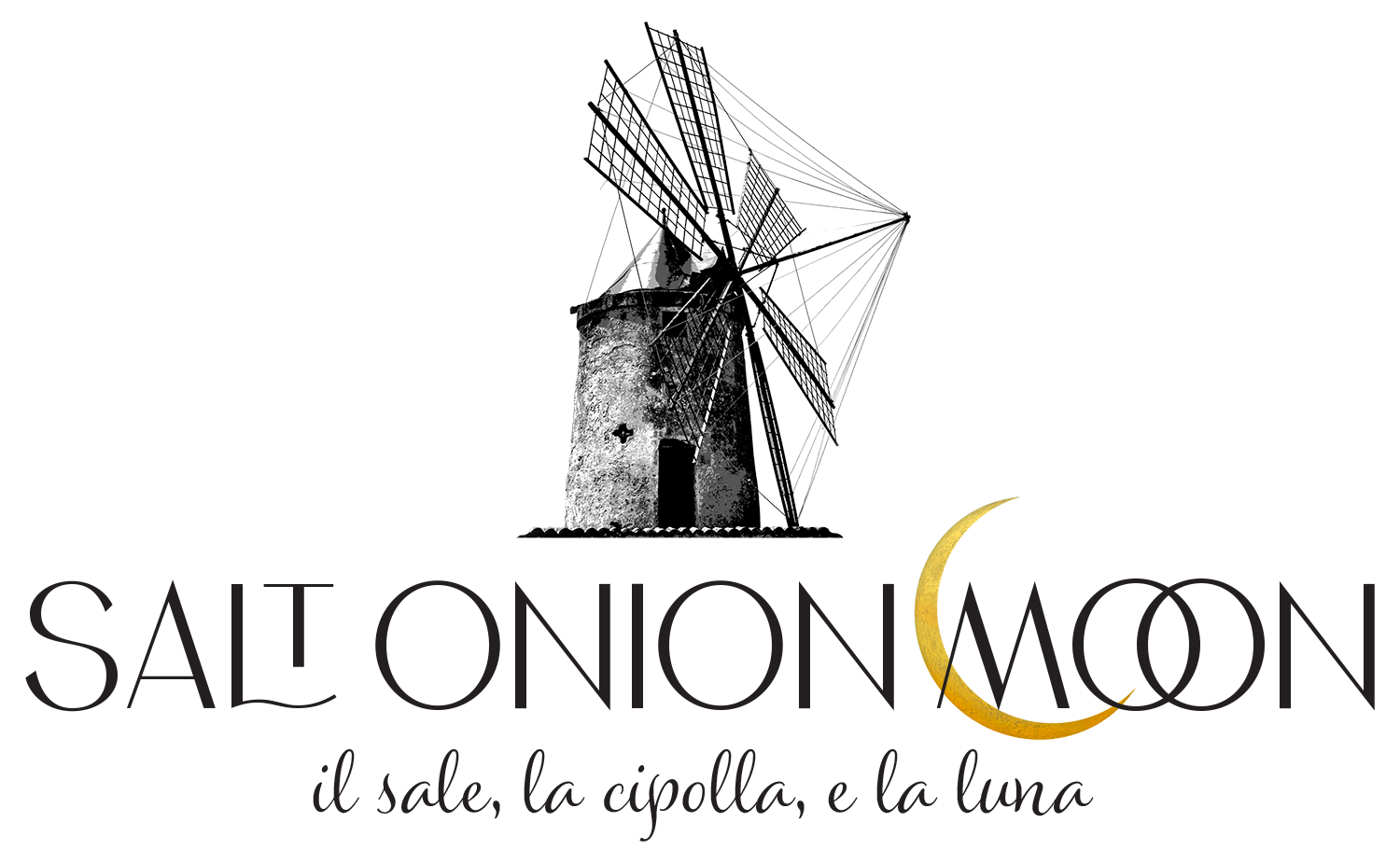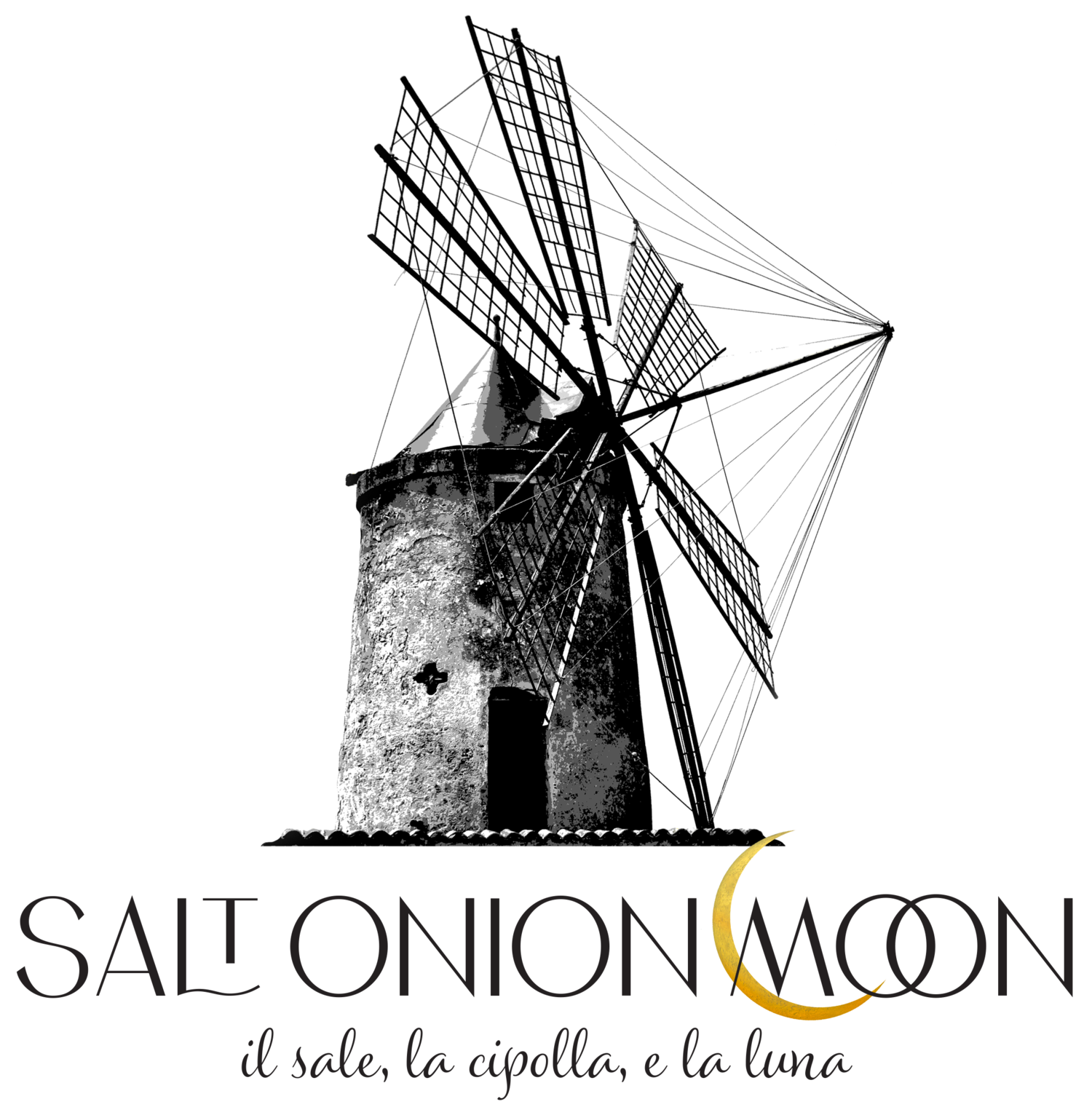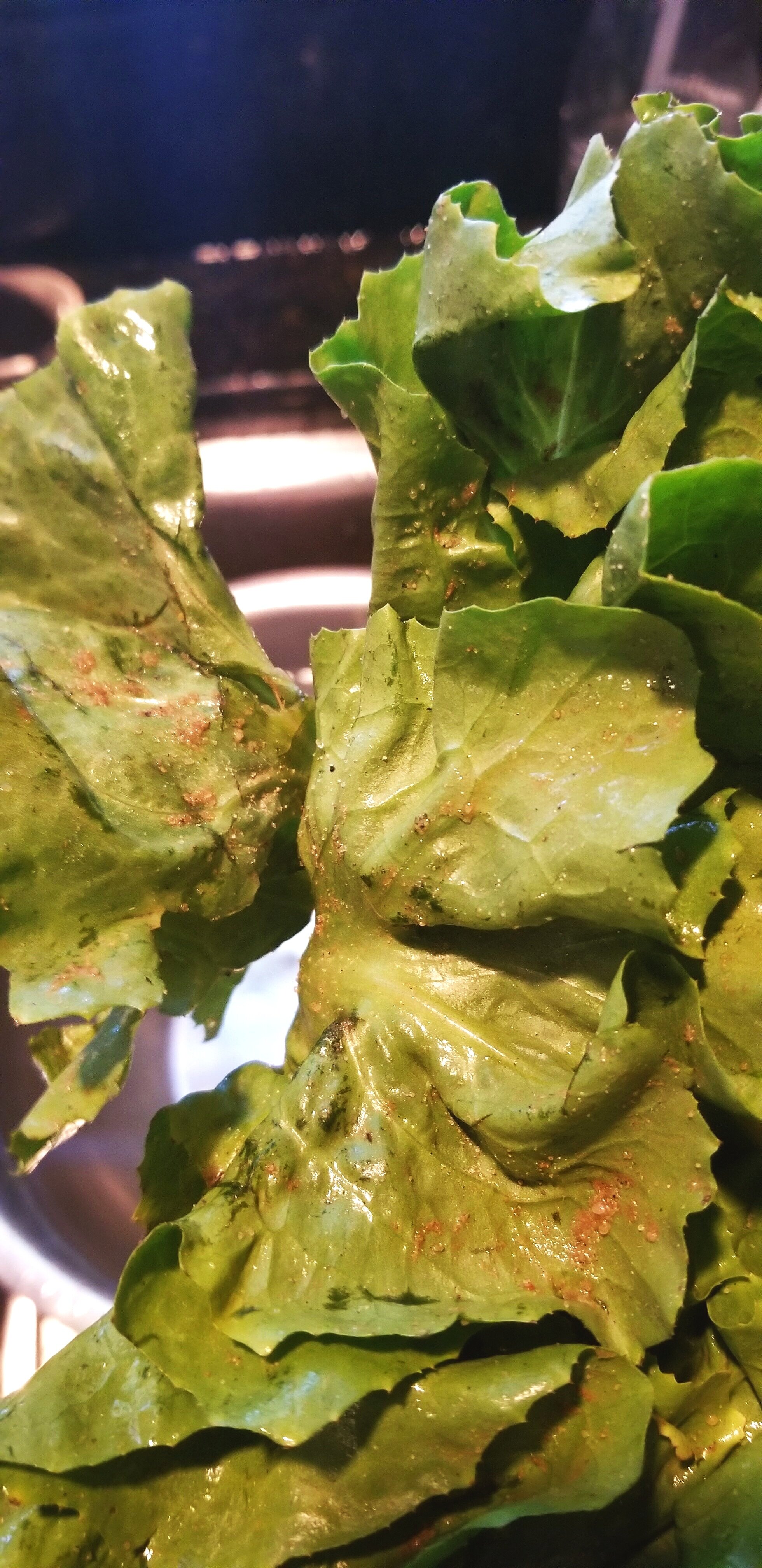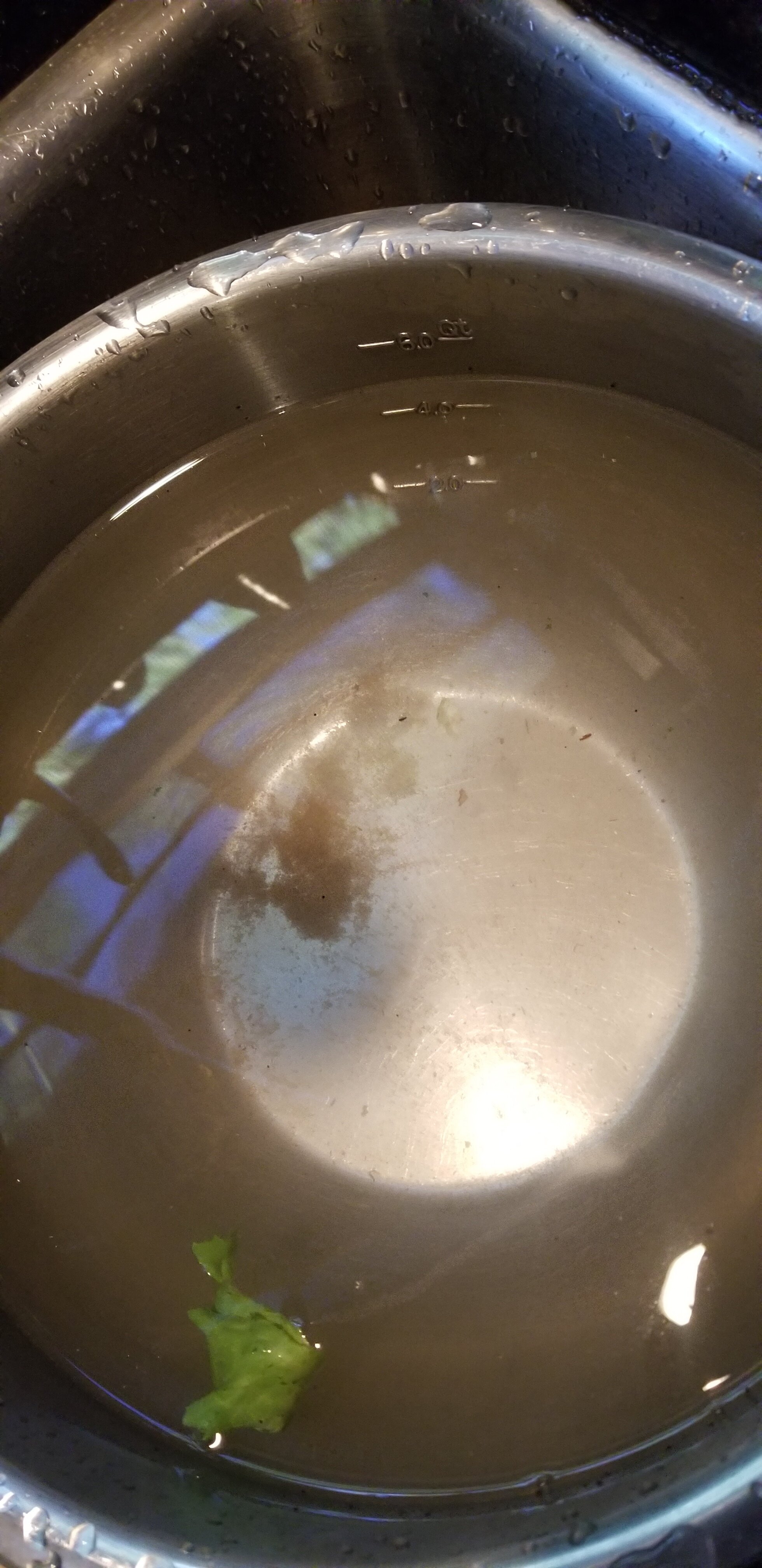Zuppa di Scarol’ i Fagioli
Escarole. Scarola. Scarol’ or if you’re in Naples or in my house: shka’doll.
Here it is spelled in International Phonetic Alphabet for the language nerds like me out there (I know you’re out there)…
/ʃkɔˈdɔ:l/
It doesn’t matter how you say it. Escarole is one of those incredibly overlooked greens: unless you are Italian.
My mother never cooked escarole for us at home. She really loved it, too. I think it was a matter of access. When we visited my nonna in New Haven, you could find it very easily. You often found it on her Sunday table as an accompaniment or contorni with the meat course. My nonno’s cugini in Waterbury, Connecticut made it. My Auntie Ann, the fabled cook whom you’ll meet in another blog post, sautéed it in garlic, pinch of red pepper flake, olive oil with a squeeze of lemon.
click here for information on The French Chef
Julia Child made life so much better for all of us regarding vegetables that were unusual asks during the original run of The French Chef. She often said to just “ask your grocer if he can stock it for you!” She was right. The more we asked, the more these products became available. We are indebted to her because of that. Now we are able to find everything we could ever want and more. Merci, Julia!
If you happen to live near a large Italian community, escarole is an easy ask. So easy that you may even find giant bags of it washed, cut and ready for cooking. If you have a store like that in your neighborhood, I want you to run out tomorrow or before dinner tonight and grab a couple of bags of the washed and cleaned stuff and make this recipe. With the cold weather coming, it’s the perfect lunch or even lighter main course for dinner.
If you are not so lucky to find the washed and chopped bags of escarole at your store, read on, MacDuff...
Escarole is a dirty little bugger. Here’s how to clean it.
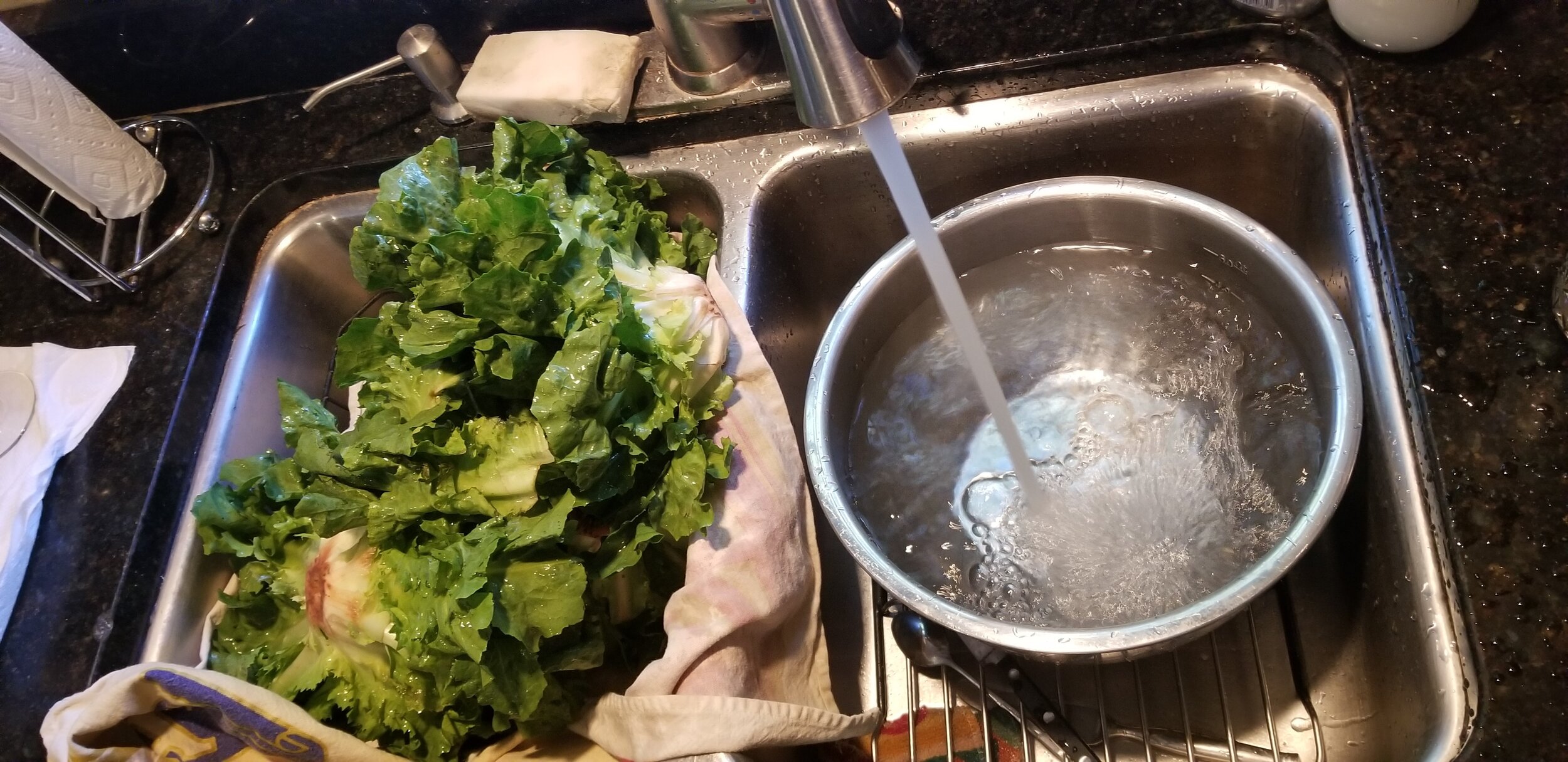

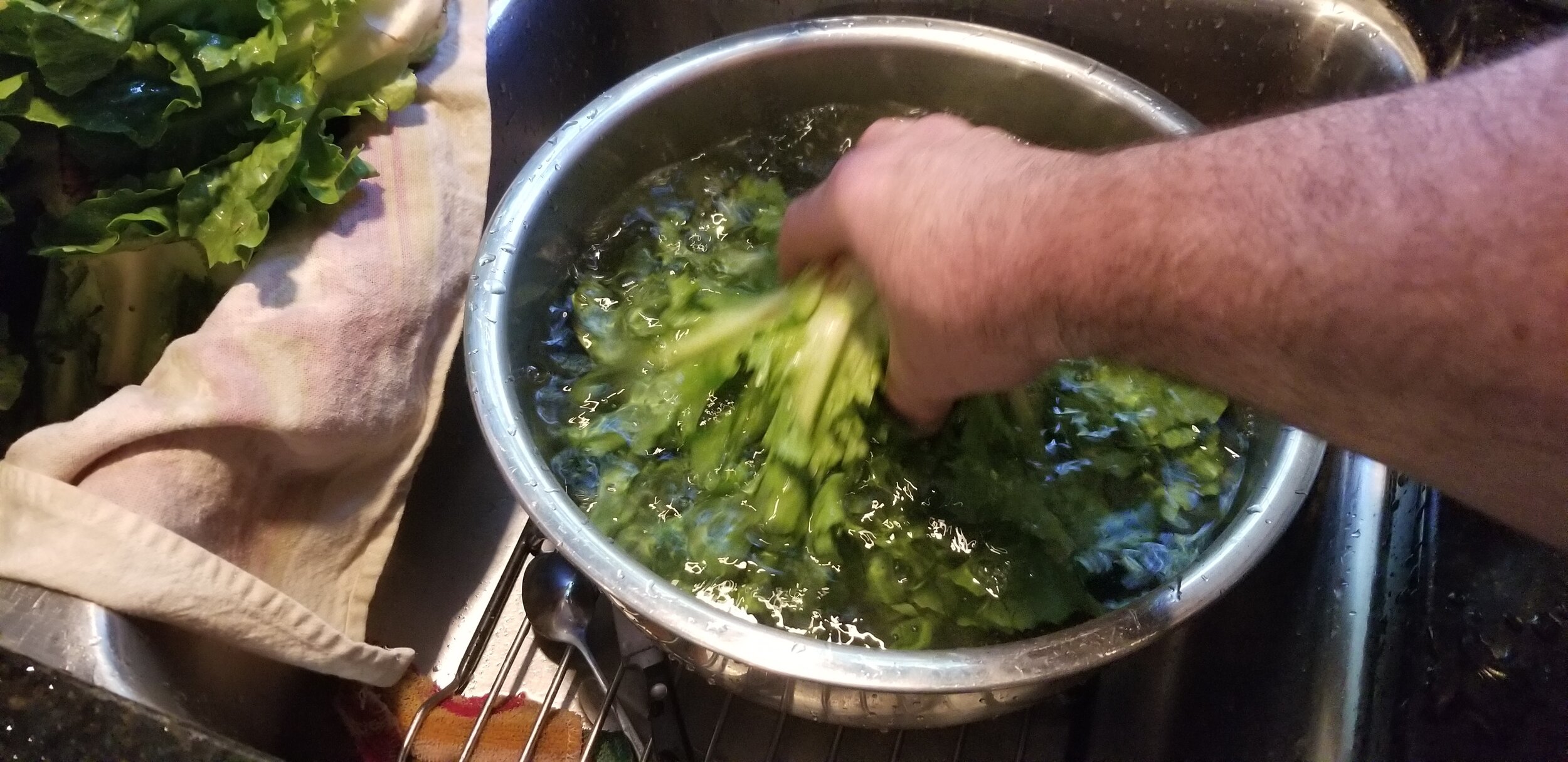
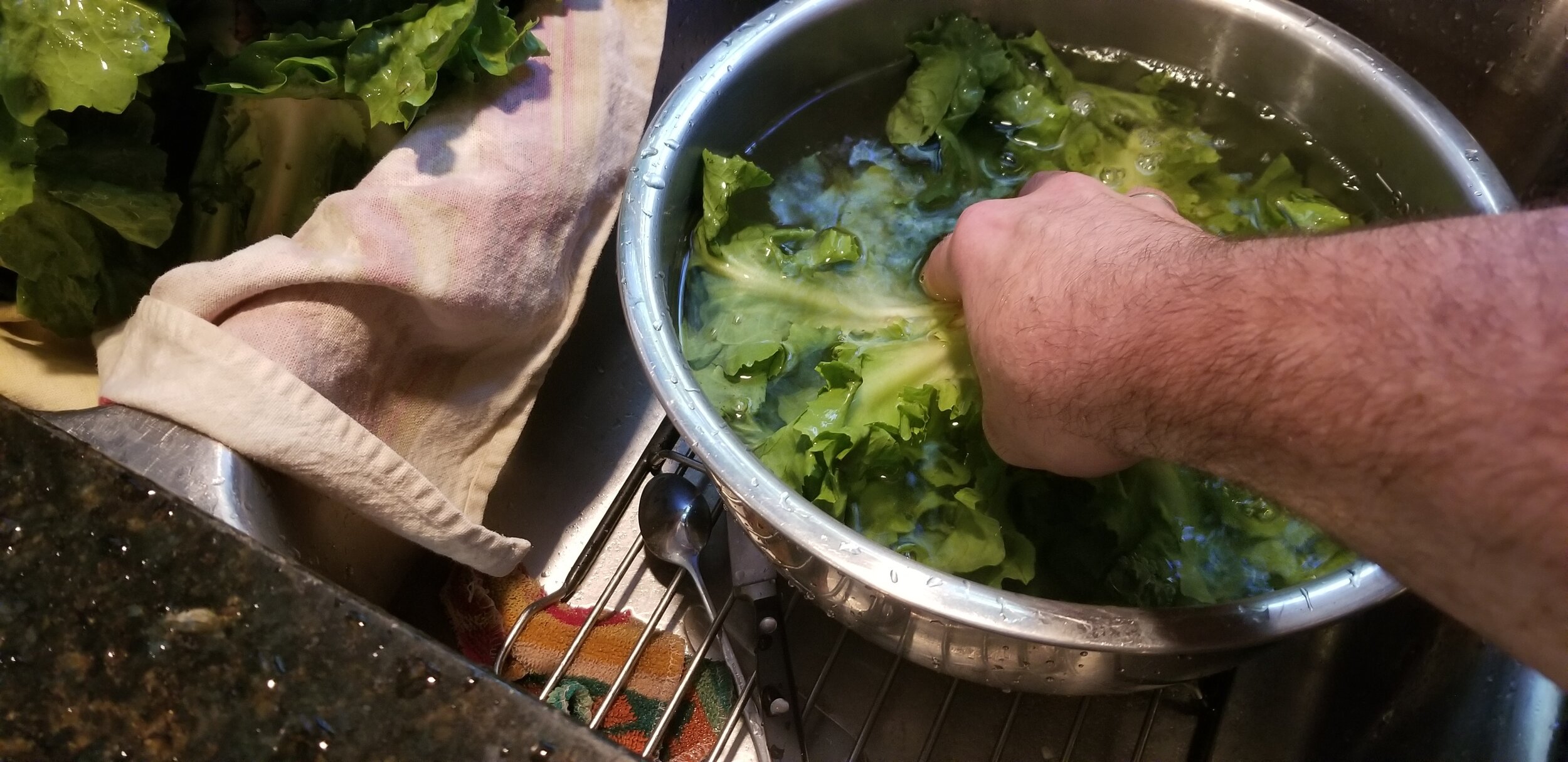
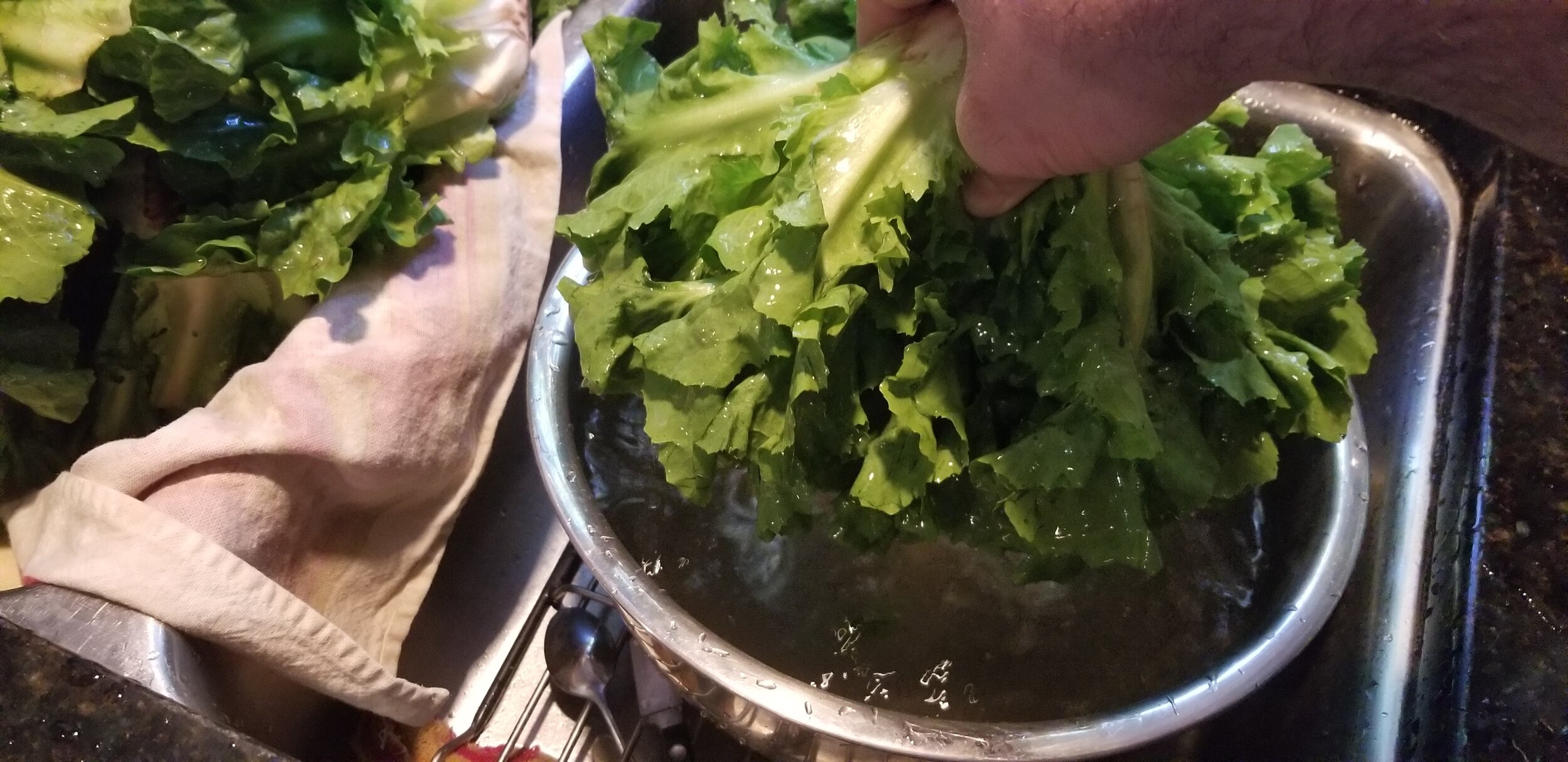
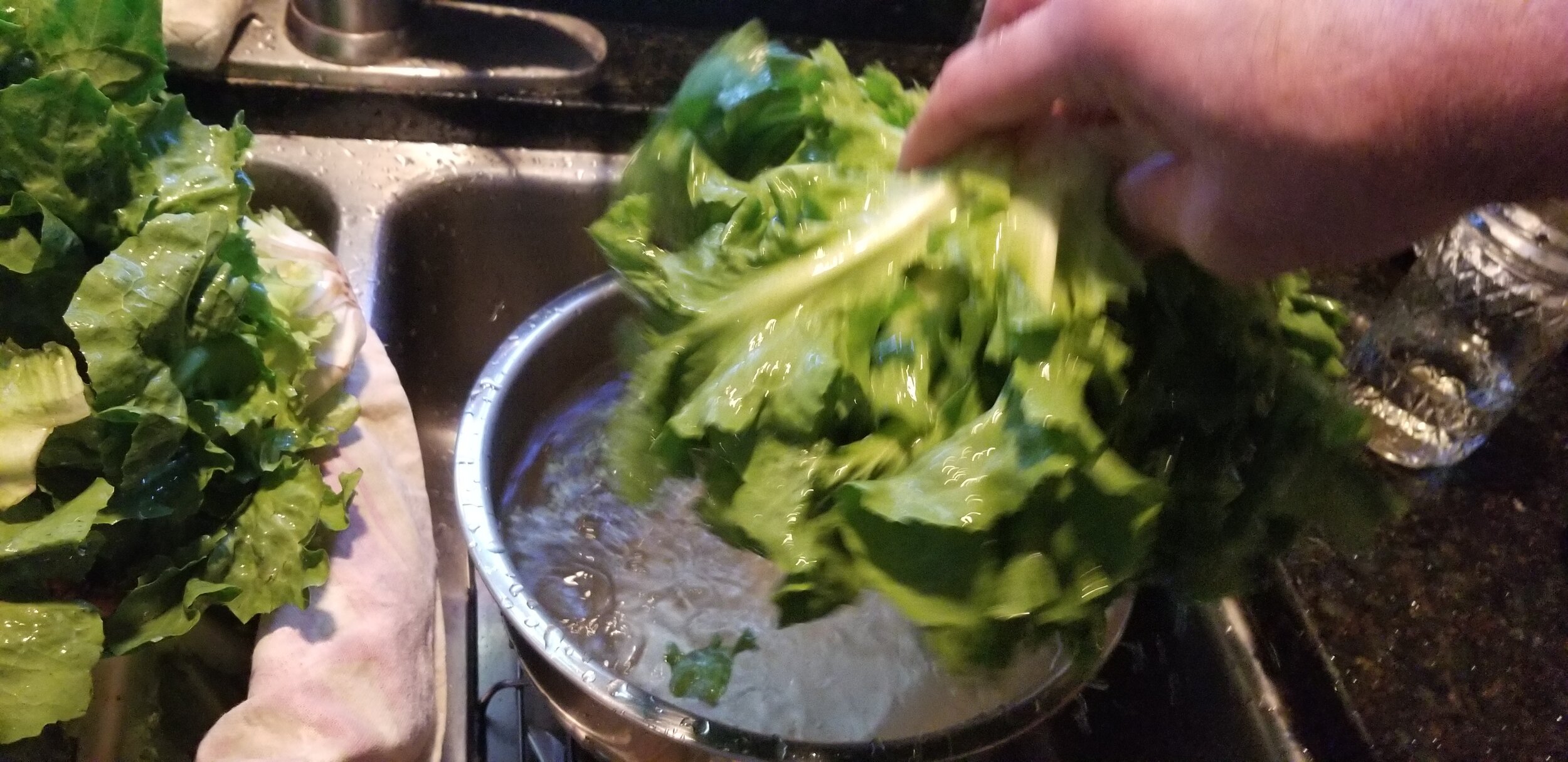
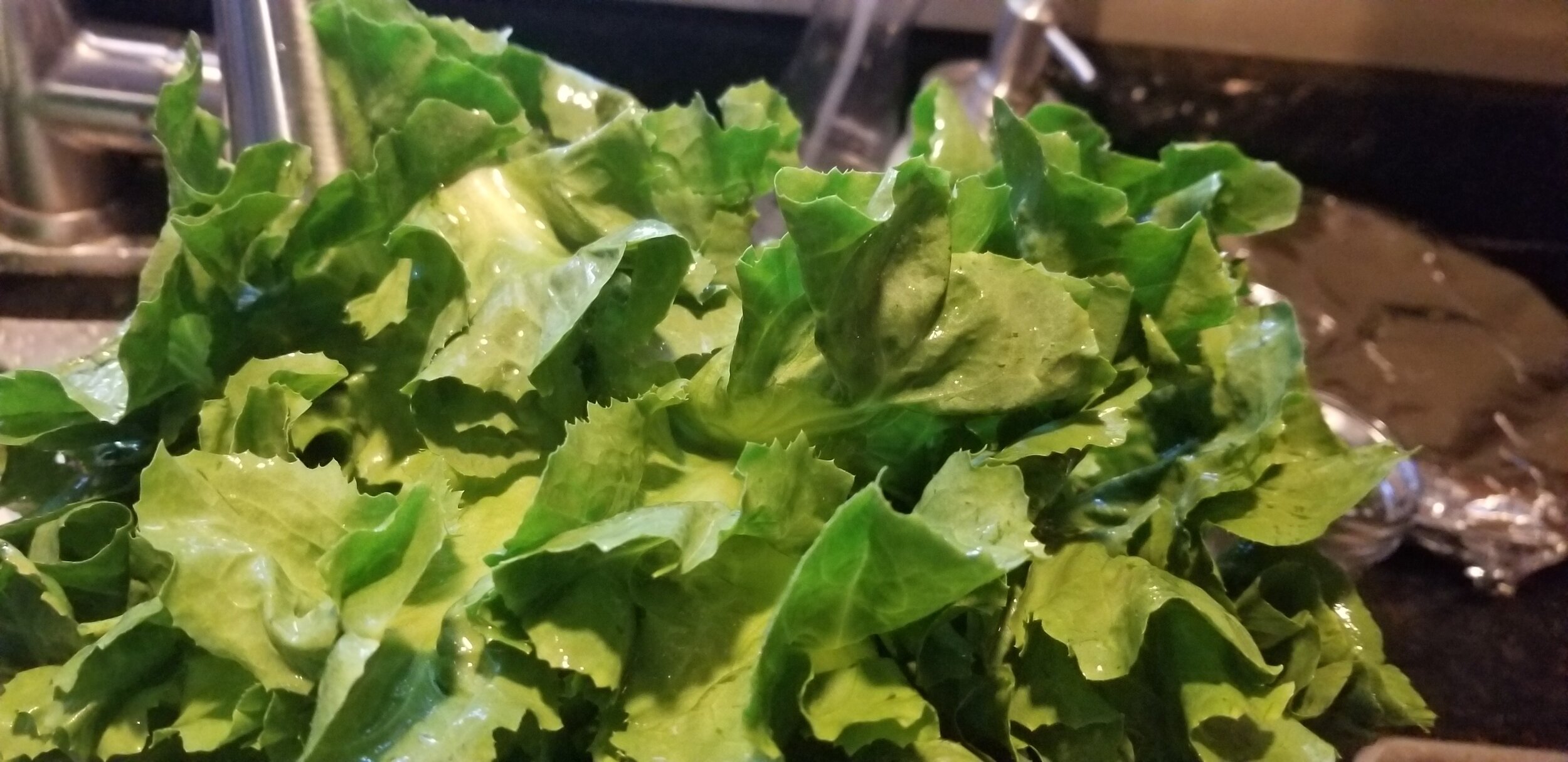
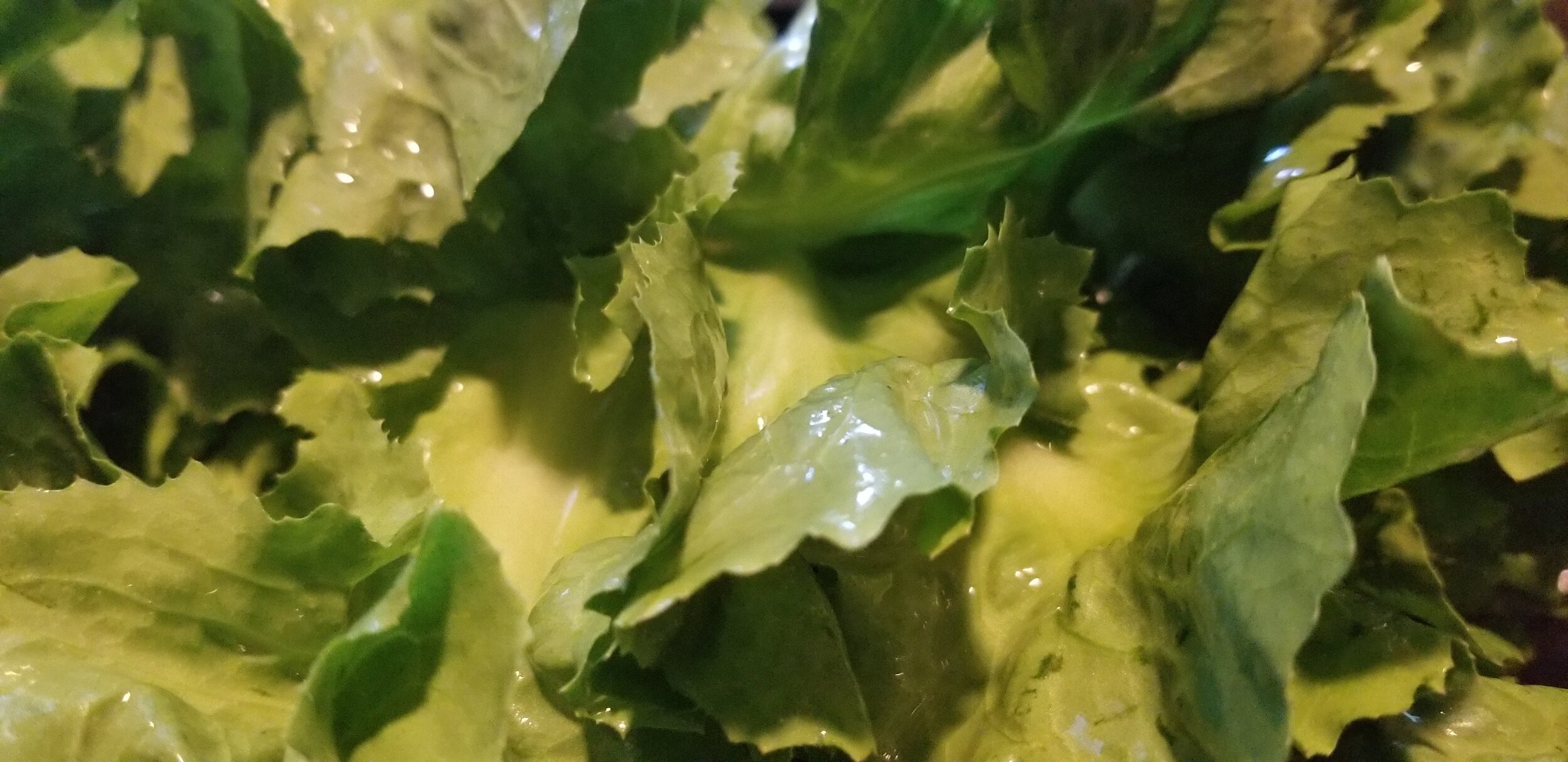
Fill a large bowl with cold, clean water. Hold your head of escarole upside down by it’s little coolie (that’s its butt) and dunk it in the water with conviction. As you dunk: twist. Turn it over and take a look. You will need to do this at least 3 times. Once you cut the little butt ends off, you’ll be able to tell if you need to wash it again and give it go ‘round in your salad spinner.
Once clean, chop into good size pieces and set aside. What size? Big enough to grab a fork full after it’s cooked, that’s how big! Don’t demolish it like a samurai.
At this point, you have many options.
INGREDIENTS
5 heads of fresh escarole washed thoroughly (or 5 bags of the cut and cleaned stuff)
1 lb of dried cannellini beans soaked overnight and cooked
OR
4-5 cans of the best cannellini beans you can find, drained
4-5 of peeled and smashed garlic
Cracked black pepper
1 large sprig of fresh rosemary
the peel and juice of 1 lemon
2 fresh bay leaves
1 tablespoon of butter
¼ cup of olive oil plus more as needed
¼ to ½ a lb of guanciale or pancetta or blanched bacon
1 large onion cut in chunky slices
1-2 pinches of red pepper flakes
approximately 3 cups of best chicken stock to cover
grated Parmigiano-Reggiano cheese
crusty bread
your favorite wine
You could make a salad. And that would be fine. But this slightly bitter green sidles up to meatballs and sausages like sexy dancer looking for a kiss. It can be eaten raw or thrown into your chicken soup or your Italian Wedding soup (post to come) or even just into your chicken broth with a better-than-fat pinch of parmesan cheese.
But wait! You could also quickly sauté it with diced pancetta and lots of sliced, toasted garlic, a splash of extra-virgin olive oil, pinch of red pepper flakes. Add a squeeze of half a lemon and a good pinch of Sicilian sea salt before you slip it into a gratin dish and top it with buttered breadcrumbs tossed that have a handful of Parmigiano Reggiano mixed into them. And why not a little lemon zest mixed into that cheesy breadcrumb mixture? Splash more olive oil on top and bake it until the top is brown, crispy and melted.
SHUT. UP.
A couple of good twists of toothy, black pepper when it comes out of the oven and you’ve got side dish that would make your mama cry.
Considering all that, we are sautéing it and I’m taking a delicious Tuscan deviation. Tonight, I am using guanciale that I sliced and diced.
Guanciale is a cured Italian pork product made from the pig’s cheek or jowel. In Italian, the word guancia means cheek. It is usually cured with salt, sugar, spices like red or black pepper and herbs like thyme or fennel. It has a bit more flavor than pancetta. It is cured with salt, but not salty like American bacon. It is a wonderful product and comes from the Italian charcuterie tradition of using the entirety of the very noble pig. It is most easily found in central Italy in Tuscany and Umbria, though I found it at Italian Market 9th Street in Philadelphia in one of my favorite pasta stores named Talluto’s. If you are in the Philadelphia area, this tiny but mighty store has great prices and a very sweet family staff.
“QB is an Italian cook’s recipe note meaning ‘Quanto Basta’ or just enough. Really: as much as you like.”
Get yourself a tall stock pot. Heat up your pot and add some olive oil. Add your diced guanciale, and start browning. It’ll render a good amount of fat. How much guanciale? Just stop it. That’s like asking, “How much bacon should I cook?" The answer is: yes. QB. As much as you want, really. Or at my house: all the bacon! Cook all of it!
Alright, truth is I used about a heavy handed quarter of a pound give or take. Are you happy now??? (insert giggles)
As it begins to brown, add your onions and turn down your heat. Toss lots of sliced or chopped garlic and red pepper flakes as you please or QB. Toss in the escarole in batches with a little pinch salt for each batch. Using a pair of kitchen tongs in this process makes it easier to turn the leaves so you can add more as you go until it is all wilted in the pot.
With a squeeze of half a lemon, you could be done now! But tonight, we are making Zuppa di Scarol’ i Fagioli so we are going to gild the garlicky lily.
You will now need enough chicken stock to almost cover the sautéed leaves. Add one tablespoon of white balsamic vinegar. I use the Trader Joe’s brand. It’s not necessary, but it supports and points up the bitterness in the escarole which I love. Let that come to a slow simmer. Cover.
Next, I used 1 pound of dried cannellini beans. Eight hours before, I put them into a huge pot of cold water and buried a couple of fresh bay leaves into the mound of beans. Then I cooked them with four or five cloves of smashed and peeled garlic, some black pepper, a sprig of fresh rosemary, the peel of 1 lemon and the fresh bay leaves a pat of butter and 1/4 cup of olive oil. I retrieved the bay leaves from the soaking process which still had life in them. NO SALT. They will never soften and they will stay hard. Save the salt for the end when they have become soft and when you adjust the seasoning. They must cook for about 45 minutes to an hour.
OR
You can open several (about 3 or 4 ) cans of a quality brand of cannellini beans and lightly sauté the with peeled smashed garlic, some black pepper, a sprig of fresh rosemary and the fresh bay leaves, the peel of one lemon, a pad of butter and extra-virgin olive oil QB. You can feel free to add salt in this case because these beans are soft.
Once the beans are done, gently fold them into the pot of greens with a rubber spatula. You don’t want to break them up so be gentle here.
Simmer for 10 more minutes.
Serve with Parmigiano-Reggiano, some grinds of fresh black pepper and a drizzle of extra-virgin olive oil and a thick slice of your favorite fresh bread. We had Kim’s incredibly wangy and succulent Sourdough Boule.
We eat this as a main course with no problem. It is as filling as it is scrumptious!
If you take the streamlined, canned bean approach, this dish comes in at 25-30 minutes total. This can be served as a side dish or contorno as well as a first course hearty soup if served with a light main dish like fish or a summery, light pasta or a frittata.
I pretty much always eat this on its own with copious amounts of parmigiano, crusty bread and salty butter. The flavors are a marriage of salt, fat, acid and heat that even Samin Nosrat would be proud of.
And wine. Always wine with this and any color or varietal as well. There are no rules. It holds up to a Gavi di Gavi as easily as it will to a Châteauneuf-du-Pape.
Becoming friends with beautiful escarole will increase the nutrients and vegetable choices in your life. It will also add a fun and versatile flair to your kitchen story.
And a story like this one is well worth the re-telling, amici.
